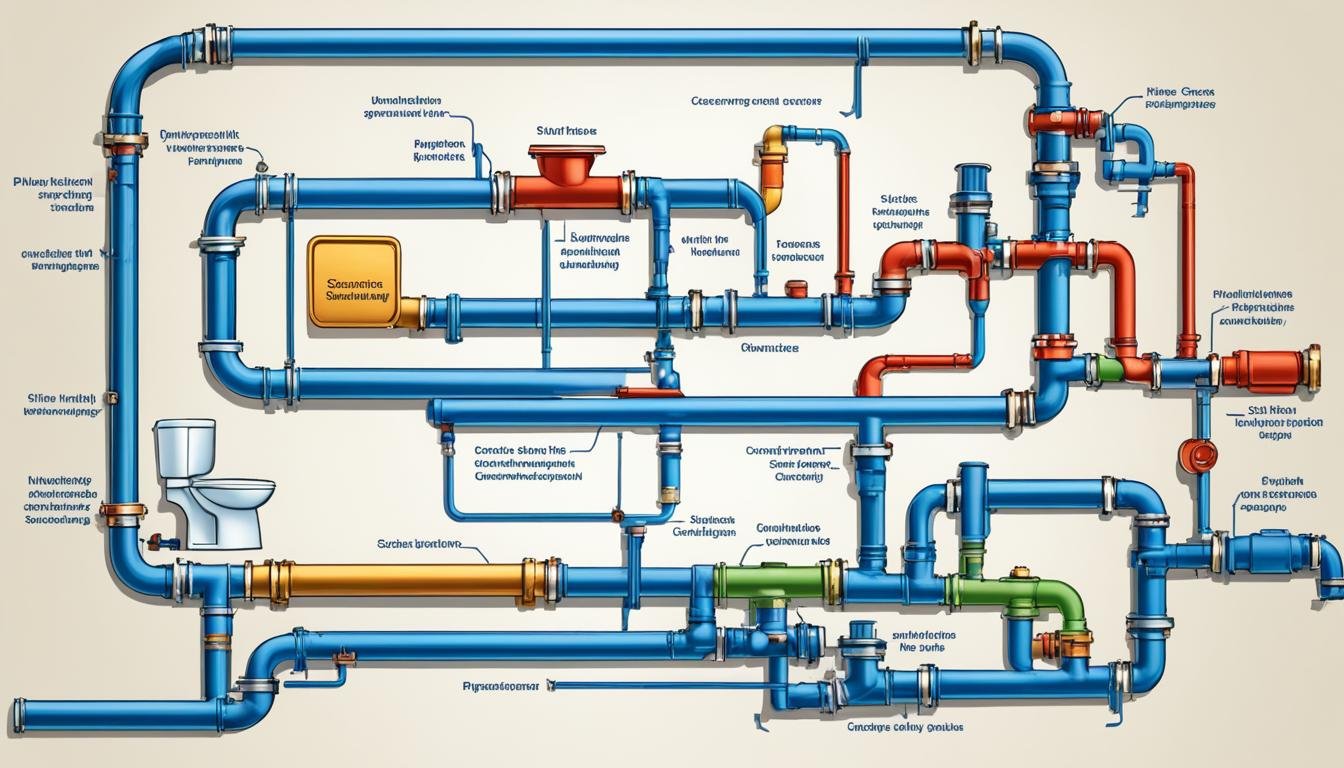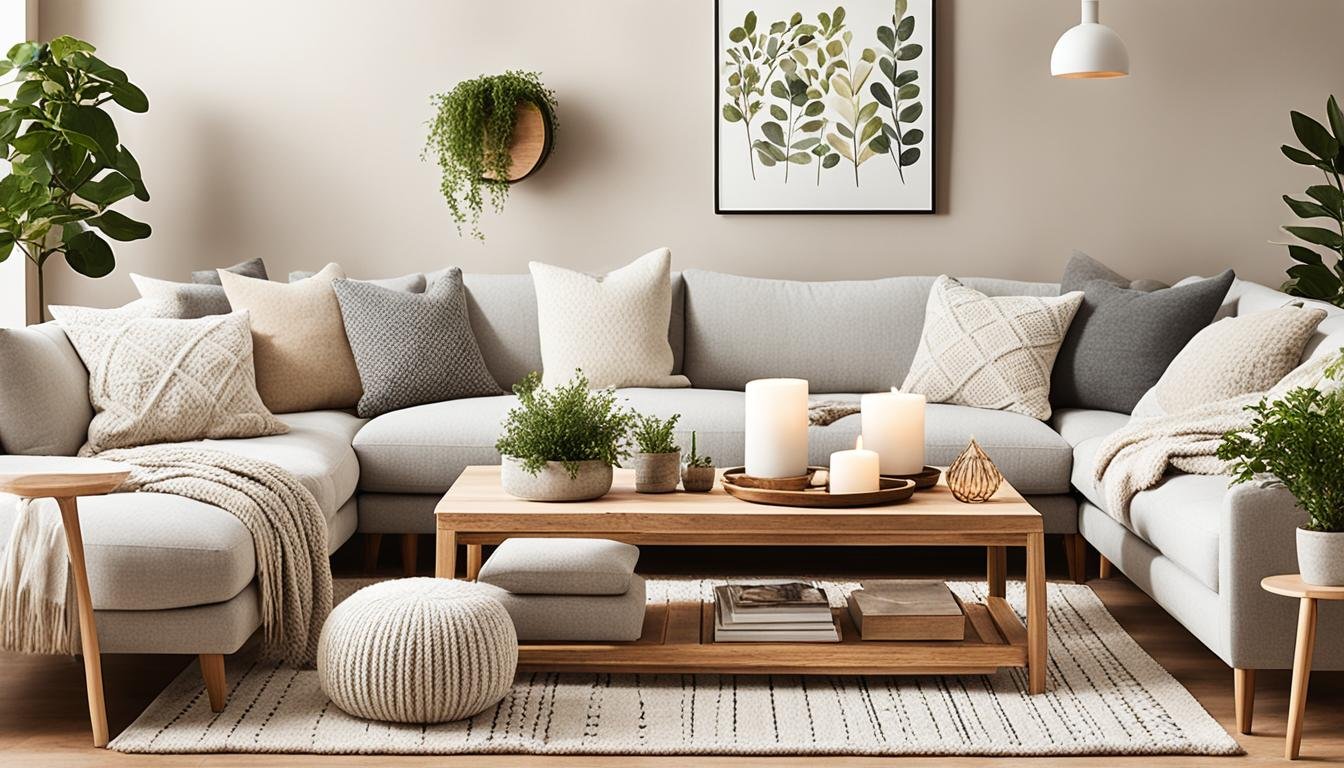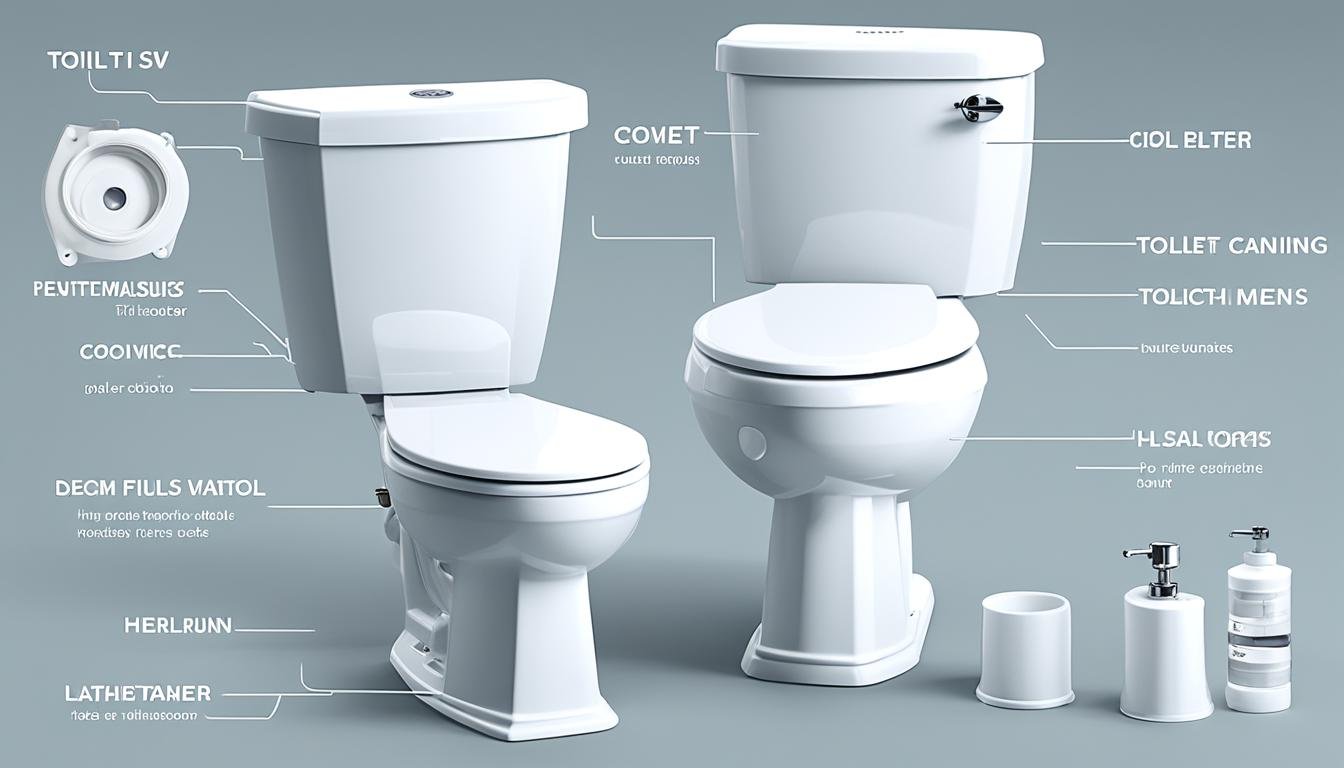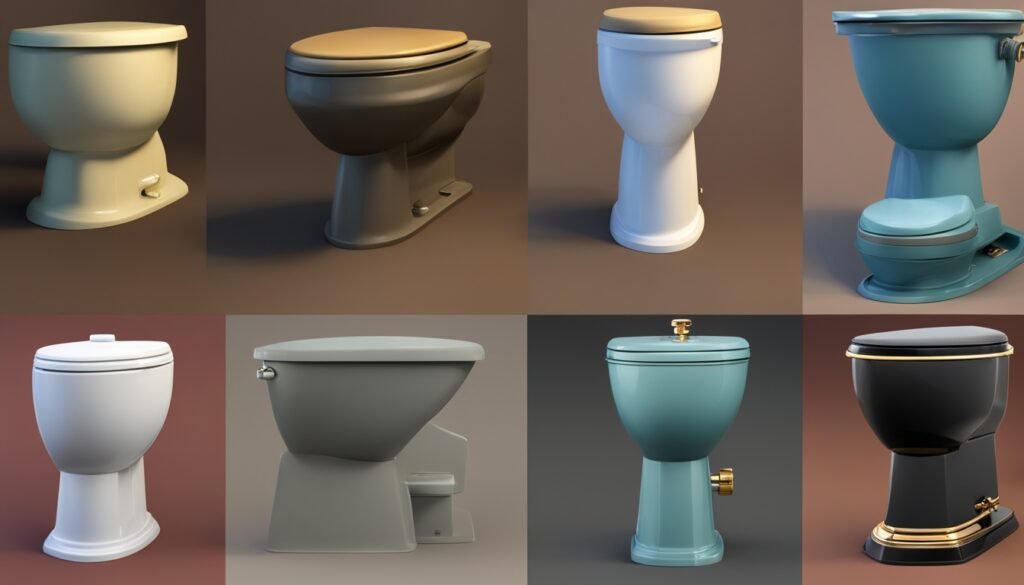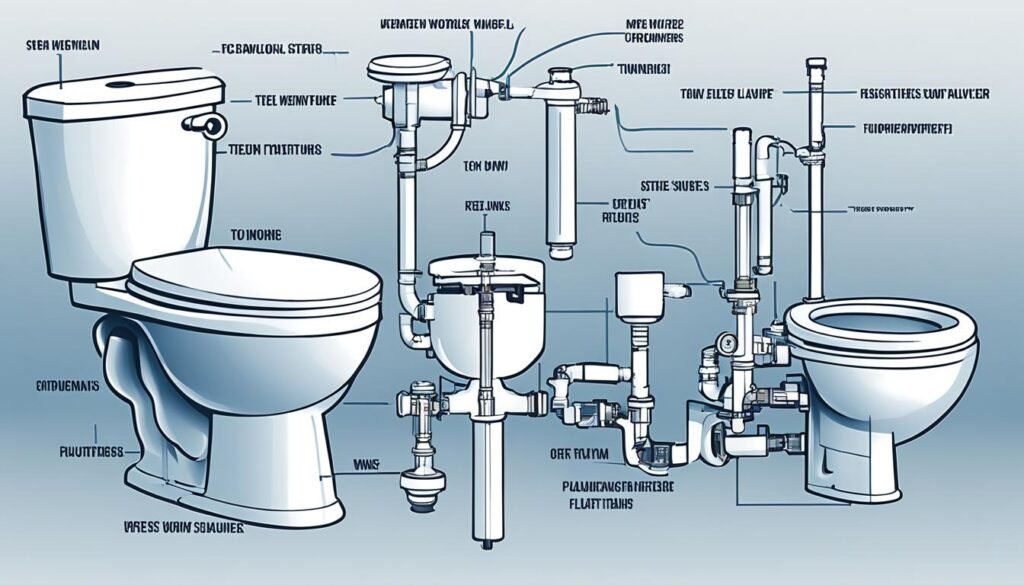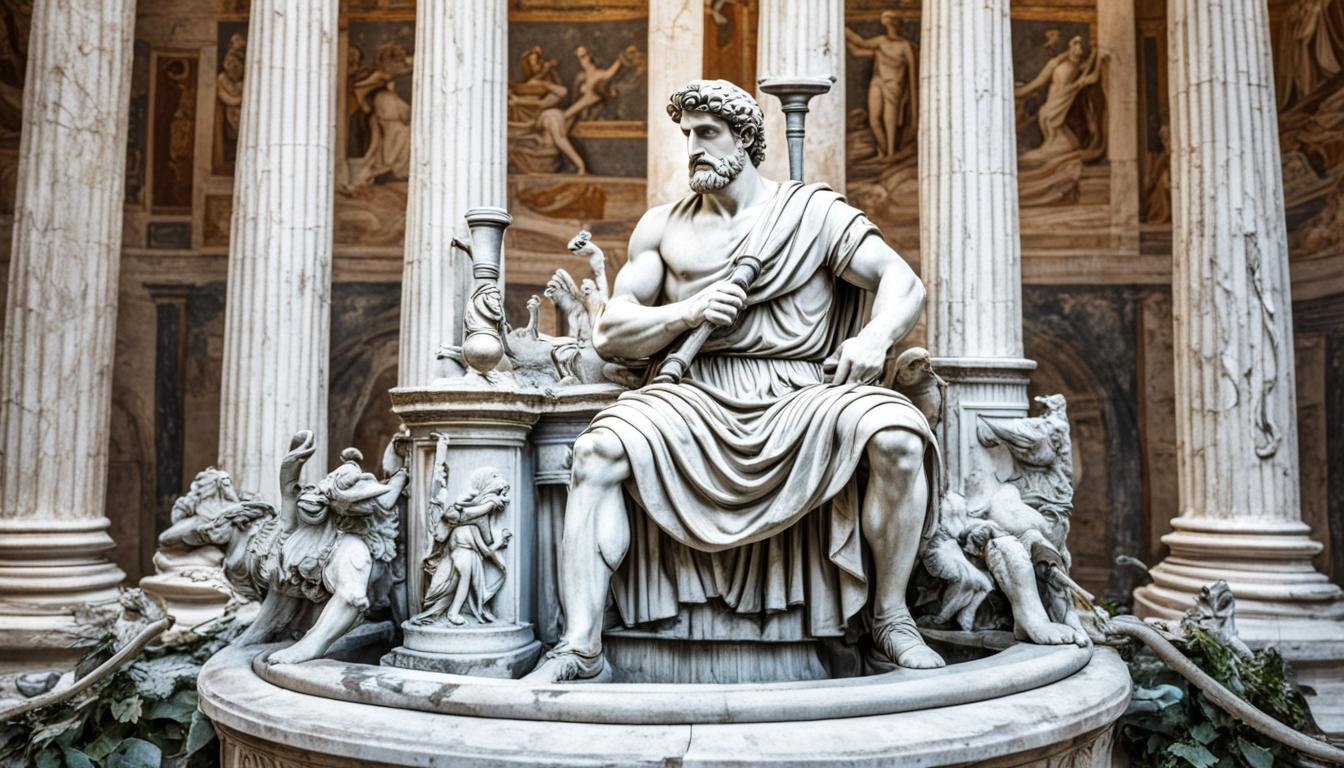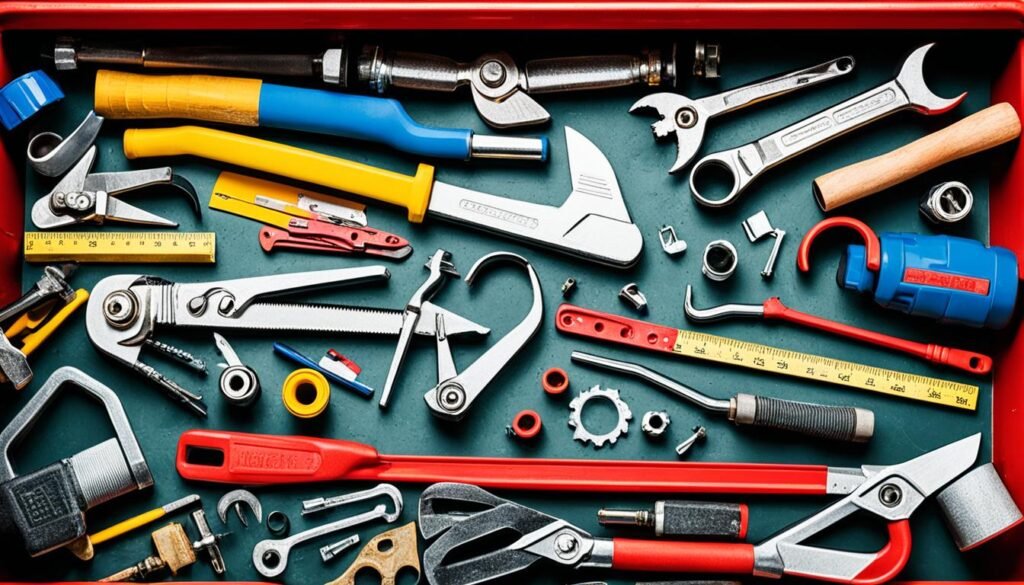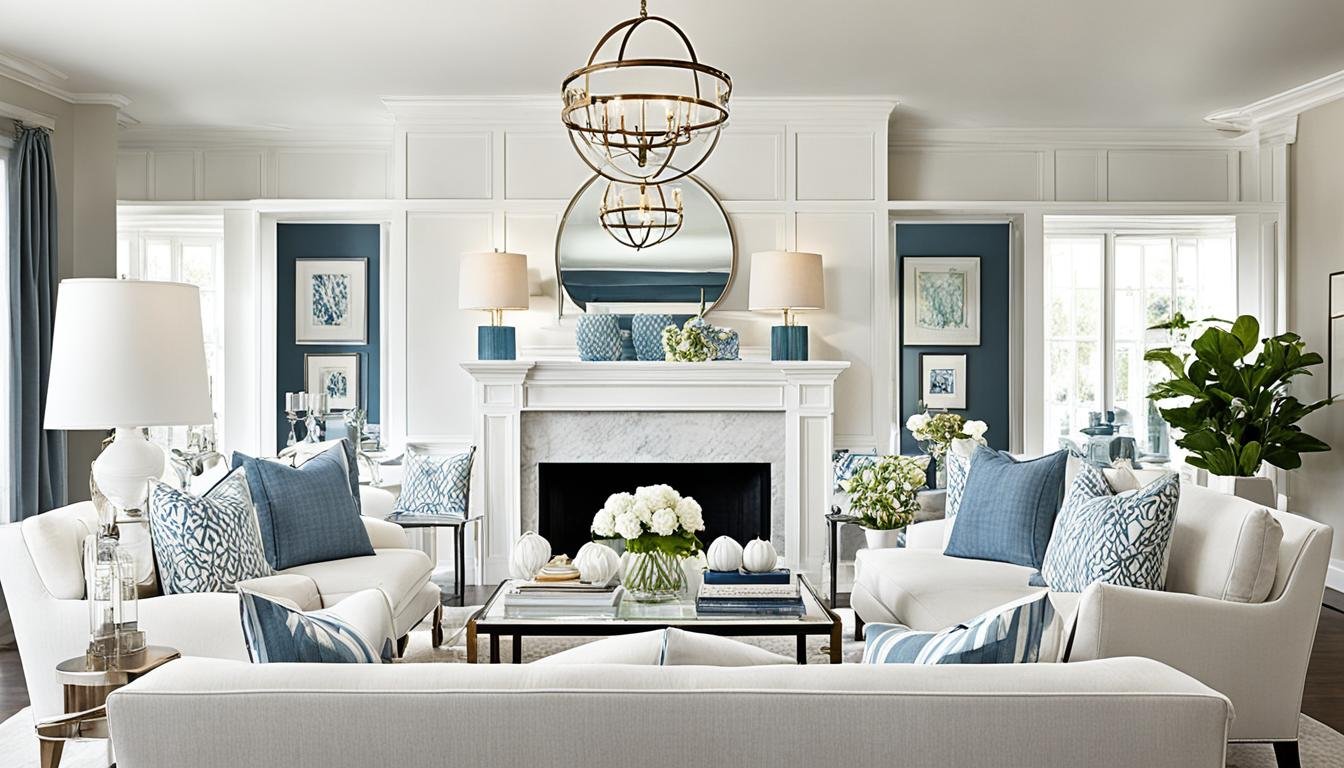Modern design rules the home decor scene for over 50 years. It started at the beginning of the 20th century. This style uses neutral colors, clean shapes, natural stuff, and works really well. Homeowners and designers love it. But, many people don’t get what “modern” really means. So, let’s look at what truly makes this design special.
Key Takeaways
- Modern home decor style is rooted in a specific design movement dating back to the early 20th century.
- Characteristics of modern style include neutral colors, clean lines, natural materials, and a focus on functionality.
- Modern design is distinct from contemporary style, which is constantly evolving and reflects the present day.
- Scandinavian and German architecture have heavily influenced the modern design aesthetic, emphasizing simplicity and minimalism.
- Modern homes often feature open-concept floor plans and seamless transitions between spaces.
Introduction to Modern Design
The modern home decor style is classic and elegant, dating back to the early 20th century. It began with the German Bauhaus movement and Scandinavian ideas. This style focuses on simplicity, clean lines, and the usefulness of every piece without much decoration.
Origins and Principles of Modern Style
The rise of the industrial age played a big part in the birth of the modern design movement. During this time, architects and designers aimed for spaces that were simple yet beautiful. They used natural materials, kept colors simple, and made places feel light and open. They believed that items should look good but mainly serve their purpose. This is known as “form follows function.”
Modern design shines in its straightforward and functional approach. It uses clean furniture, materials like wood and stone, and layouts that welcome light and space. These interiors often have big windows, simple colors, and a pop of bright color or piece to draw the eye.
| Key Characteristics of Modern Design | Examples |
|---|
| Clean, geometric lines | Minimalist sofas, angular coffee tables, geometric light fixtures |
| Emphasis on natural materials | Wooden furniture, stone countertops, natural fiber rugs |
| Neutral color palettes | White, gray, beige, black, and earth tones |
| Open, airy floor plans | Seamless integration of living, dining, and kitchen spaces |
| Functional, minimalist decor | Accent lighting, statement art pieces, streamlined accessories |
Adopting modern design ideals helps in creating beautiful and practical living spaces. These spaces fit the modern lifestyle perfectly, reflecting the Dream Home Digest.

Key Elements of Modern Home Decor
Creating a modern home decor style involves several important points. It’s about using colors like white and gray and adding natural materials. These choices make your home look simple yet stylish. They also help join your indoor and outdoor spaces perfectly.
Modern Furniture and Accessories
The center of modern home decor is its furniture and accessories. They are simple, with clean lines, and often made of metal, chrome, or glass. This design style values minimalism over complexity. It also uses unique lighting and decor to make spaces stand out.
Look for simple and neutral furniture when you’re shopping. Pieces in white, beige, and gray can work wonders. Also, pick items made with the environment in mind, like bamboo and recycled glass. This shows a commitment to both style and sustainability.
| Modern Design Element | Description |
|---|
| Neutral Color Palette | Shades of white, beige, gray, and taupe create a serene and unified look. |
| Natural Materials | Sustainable options like bamboo, stone, and recycled glass are favored. |
| Clean Lines | Furniture and accessories feature minimal ornamentation and simple, sleek designs. |
| Ample Lighting | Large windows, skylights, and strategic lighting fixtures enhance the sense of openness. |
| Open Floor Plans | Seamless transitions between indoor and outdoor living spaces promote a flow. |
These design elements help you create a modern sanctuary. They focus on simplicity, function, and environmental friendliness. No matter where you live, this style brings a look that lasts and adapts well over time.

“Modern design is not just about the aesthetics; it’s about creating spaces that are both beautiful and functional, with a focus on sustainability and the integration of indoor and outdoor living.”
Modern Home Decor Style
In the world of interior design, modern home decor style shines brightly. It has been popular for over fifty years. People often mix it up with contemporary design. Yet, they’re not the same. Contemporary design keeps changing. Modern style is from the early to mid-20th century. It features clean lines, neutral colors, and a function-first mindset.
Modern home decor is known for being minimalist. Yet, it’s not as strict as minimalism. It welcomes natural materials, open spaces, and standout pieces. This mix of simple and fancy makes the home calming and inviting. Many homeowners love it for that.
Modern furniture and accessories are about sharp shapes and being useful. They often hide storage to keep things neatly placed. Lights in these homes are simple and use natural light a lot. They fit right in with the style’s simple look.
- Neutral color schemes, with added pops of color, reign in modern design.
- Tiled or marble floors are common. They make the space look good and are safe too.
- Geometric shapes and patterns often bring playful vibes to the design.
Modern decor is a classic choice for anyone wanting a stylish and practical home. It focuses on minimalism but with natural elements and key pieces. This makes the home a place of peace and beauty that’s also very functional.
“The essence of modern design is to create a clean, uncluttered and functional living space that promotes a sense of calm and well-being.”
This style is still a top pick for many who prefer easy living, care about the environment, and love tech. They bring these aspects into their homes, making them look great and feel just right. It shows off their unique taste and makes life better.
Differentiating Modern from Contemporary
People often mix up “modern” and “contemporary” when talking about home decor. These design styles are actually quite different. Modern home decor style comes from the early to mid-20th century. It focuses on natural colors and strong features. Contemporary design is always changing, looking toward the latest trends.
The modern design started with the Bauhaus movement and Scandinavian design in the 1920s through the 1950s. It loves clean, simple spaces with natural materials. The color schemes usually include warm neutrals. Midcentury modern, from the 1950s and 60s, brought in bright, fun colors.
“Modern design encompasses the early to mid-20th century, including the 1920s Art Deco and 1950s & 1960s midcentury modern trends.”
Contemporary design pulls from many styles, including modernism and futurism. It doesn’t focus on a specific time period. Instead, it’s about what’s new in design right now. Contemporary spaces have clean, minimalist furniture. They may mix bright colors with neutral shades and use striking decorations.
Both styles like clean lines and lots of light. But modern design is more structured and traditional. Contemporary design is more free-flowing and mixes different elements. Modern rooms use materials like wood and leather. Contemporary spaces might feature metals and modern, shiny finishes.
Picking a modern or contemporary style can reflect your taste and what kind of vibe you want in your home. If you love the look and feel of the 20th century, you’ll probably prefer modern decor. If you’re into the latest trends and a design that’s bold, contemporary design might be more your style.
Embracing Minimalism in Modern Homes
Today, people love the looks of modern home decor style. A big part of it is minimalist design. This design focuses on using less but making sure everything is useful. So, with this style, homes are beautiful and work well for the people living in them.
Minimalism says “less is more.” It started in Japan and values things like natural materials and open floor plans. Accent lighting is also key. This makes homes feel calm and peaceful. A big part of this is keeping things simple and free from clutter, which makes rooms look neat and clean.
- The minimalist interior design trend shows no signs of slowing down in 2024, making it one of the most desired styles of the year.
- Natural materials like boucle, wood, tweed, metal, and woven rugs in neutral colors are often incorporated into minimalist design to provide warmth and texture.
- Minimalist design emphasizes clean lines, simple shapes, and the use of space and light to create a tranquil, focused environment.
- Organized and decluttered homes can lead to increased focus and productivity, making minimalist design particularly appealing for home offices and study spaces.
By following minimalism, people make their modern homes look amazing. They also help the environment and feel more peaceful. This way of designing homes tells us to choose quality, not quantity. It’s about buying things that last a long time and using them well.
| Key Elements of Minimalist Design | Benefits of Minimalist Design |
|---|
- Clean lines and simple shapes
- Neutral color palette
- Natural materials
- Emphasis on space and light
- Functional, multi-purpose furniture
- Decluttering and organized storage
| - Tranquil, serene environment
- Increased focus and productivity
- Sustainable living and mindful consumption
- Timeless, elegant aesthetic
- Versatility and adaptability
- Connection to nature
|
Minimalist design is great for modern home decor. It not only shows what people like but also makes them feel calm. This style is all about being simple, useful, and close to nature. It’s a top choice for anyone who loves good design and caring for the planet.
“Minimalist interior design emphasizes the use of space and light, enhancing the illusion of space in a room. It is essential to invest in timeless pieces of furniture that will last for years to come.”
– Alessia Lamonaca, Interior Designer
Regional Influences on Modern Design
Modern home decor has seen many influences. Each brings something new to simple design, contemporary furniture, and green living. Scandinavian design, which believes in clean lines and natural materials, contrasts with the fearless spirit of American modernism. Meanwhile, Brazilian styles add a touch of organic beauty. All these influences have shaped what we call modern design today.
Scandinavian Influence
The style from Scandinavia focuses on being useful, simple, and close to nature. Homes in this style are often filled with light colors and let in as much natural light as possible. They use materials like wood and textiles. Special lighting and unique pieces, such as Eames chairs, decorate these simple spaces.
American Modernism
American design is known for experiments with new materials and blends of style and function. The work of Charles and Ray Eames is a key part of this movement. Their use of plastic and steel in furniture is a great example. The style also includes smart home tech, showing a love for nature and modern living.
Brazilian Influence
In Brazil, modern design uses local materials to create beautiful yet practical furniture. The style is full of warm woods, like jacaranda, crafted into interesting shapes. This design reflects a deep connection to the environment. Brazilian style has made a big impact on modern home decor around the world.
| Region | Key Design Elements | Aesthetic Influence |
|---|
| Scandinavia | Bright, neutral colors; open floor plans; natural materials | Functionality, simplicity, connection to nature |
| United States | Innovative use of materials; open floor plans; smart home technology | Experimentation, sustainability, contemporary aesthetics |
| Brazil | Use of local, natural woods; organic, sculptural forms | Balance of function and aesthetics; connection to the environment |
These influences have made modern design what it is today. They’ve made a rich, diverse world of design. Mixing these styles lets people and designers create spaces that are modern yet reflect their story. This mix also keeps in mind key values like living simply, caring for the earth, and looking forward.
Modern Home Decor Style in Today’s Interiors
Modern design started in the early to mid-20th century. It features clean lines and a focus on simplicity. These aspects have made it a timeless hit in today’s home decor. Modern homes often have open plans that flow into outdoor spaces. This matches today’s design trends that value minimalism and being eco-friendly.
The revival of modern design has made classic pieces more available. For example, the Eames lounge chair and the Tulip chair can now be in many homes. These items, along with natural materials and special lighting, create a modern and functional style. This style is known for its beauty and practical use, blending furniture with the overall look.
Besides furniture, modern design has influenced things like open floor plans and smart technology in homes. These features together make spaces feel bigger and living simpler. It attracts those who like a simple look but still want their home to feel inviting.
Now, many people choose to decorate with eco-friendly materials and use efficient lighting and appliances. This choice connects with the main ideas of modern design. It also shows a desire to take care of the planet.
In homes today, modern decor is loved for its neat, minimalist look. From the furniture to the technologies, modern design changes how we view our living areas. It’s not just a style but a way to make our everyday surroundings better.
“Modern design has a timeless quality that resonates with homeowners seeking a refined and minimalist approach to their living spaces.”
| Design Style | Key Characteristics |
|---|
| Modern | Clean lines, minimalist, emphasis on function, use of natural materials |
| Contemporary | Always evolving, sleek and simple spaces, use of light-reflecting materials |
| Transitional | Blends traditional elegance with contemporary elements, balanced design |
| Minimalist | Less is more, neutral color schemes, functional furniture with hidden storage |
| Mid-century Modern | Indoor-outdoor living, use of rich woods, accents of bold colors |
Conclusion
Modern home decor started in the early 20th century. It focuses on minimalism, using neutral colors and natural materials.
It’s not the same as contemporary design. Modern style has its own history and design choices. These ideas still impact today’s interior design.
The key to modern decor is keeping things simple and functional. Use materials like wood and leather. Add open spaces and special lighting for the right look.
Many love the mid-century modern look or its clean lines. You can mix these ideas with your own for a unique space. Making your home modern is about style and eco-friendly choices.
FAQ
What is modern home decor style?
It’s a design style from the early 1900s known for its simple look. It uses neutral colors, natural materials, and straight lines. This style values practical use more than being fancy.
How is modern style different from contemporary style?
Modern style comes from the early to mid-20th century, and its look is specific. Contemporary design, however, changes with time. It’s always updating to reflect the now.
What are the key elements of modern home decor?
Modern homes have a few key features. They often use simple, neutral colors and natural wood. You’ll see clean lines, functional furniture, and an open arrangement of the rooms.
How does modern design incorporate minimalism?
Modern style often includes ideas from minimalism. But, it isn’t as strict. Minimalism is about using the fewest elements, like simple colors and furniture, to keep spaces uncluttered.
How have different regions influenced modern design?
Places like Scandinavia and America have added their own ideas to modern design. Scandinavia uses lots of light and simple, bright colors. The American style includes the bold use of new materials. In Brazil, designers focused on local natural wood for their pieces.
How is modern home decor style relevant in today’s interiors?
Modern design fits well with what many people look for today. Its open layouts and simple style match up with sustainable living goals. Also, it’s easier now to find and afford classic modern design pieces.
Source Links



